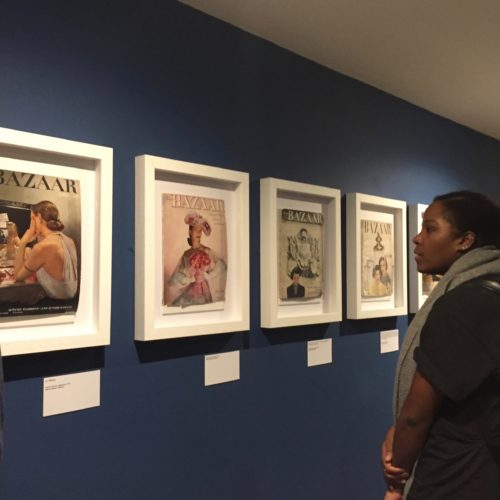Upon a recent viewing of the Balenciaga: Shaping Fashion exhibition at the V&A, as well as the focus on shapes and forms, I was particularly interested in the mentioning of Balenciaga’s fascination with fabrics. In the exhibition there featured a couple of displays of fabric swatches and samples, including a huge book with fabric samples. One of the textile boards showed a multitude of fabric choices for a single collection — so many colours, patterns, and textures. The board was used as a marker for the models for the order of the show. Rather than representing fashion and dress predominantly through its shape and overall look like we usually do, Balenciaga associated his designs with their fabric, texture and colour. On the board he detailed where the fabric was made and the name of its wearer, providing almost a personality and identity to the fabric itself.
Rather than starting with a design or a sketch, Balenciaga began with the fabric. As he said, “It is the fabric that decides.” His knowledge and interest for different cloths led him to forge very close working relationships with many textile manufacturers worldwide. In order to create the magnificent shapes of his garments, fabric was the most important aspect. Because of this, stiff materials were often needed to hold the shapes of his designs. After his careful selection of fabrics, Balenciaga preferred to start making instead of dwelling on sketches and designs. Instead, a sketch artist would work on the drawings for him, and Balenciaga would attach a fabric sample to the sketch. In the exhibition, a huge book of fabric samples is displayed in a glass case, offering a tactile tease to us viewers — the beautifully coloured fabrics shone in the display light, away from our grasp. In selecting the fabric first, Balenciaga was choosing the viewer and the wearer of the garments, whose skin these designs would be in contact with. The exhibition also had a replica dress of Balenciaga’s that visitors of the exhibition could try on, all in order to recreate the feeling of enveloping oneself in one of his designs.
Balenciaga: Shaping Fashion is on at the V&A until February 18th, don’t miss it!
By Grace Lee






















